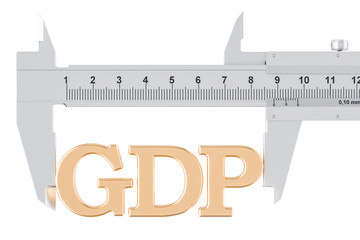 OPINION: Traditionally national progress i.e. our development as a country or society, has been measured mainly in economic terms, through the measurement of GDP. However, it has long been recognised that GDP is a very one-dimensional indicator. It is generally agreed that a better indicator would be one that also included environmental and social parameters. But actually doing something about it has proved to be quite difficult. The present Government is nevertheless committed to having such a broader indicator (or maybe a package of indicators).
OPINION: Traditionally national progress i.e. our development as a country or society, has been measured mainly in economic terms, through the measurement of GDP. However, it has long been recognised that GDP is a very one-dimensional indicator. It is generally agreed that a better indicator would be one that also included environmental and social parameters. But actually doing something about it has proved to be quite difficult. The present Government is nevertheless committed to having such a broader indicator (or maybe a package of indicators).
First some comments on GDP as an indicator.
It is no accident that GDP is the most widely accepted measure of national well-being around the world and is accepted as a key way of comparing the performance of different counties. The main reason is that it incorporates economic activity in a consistent way, and it is quantitative. Basically, anything that is bought and sold i.e. is exchanged in some sort of market, is captured.
The downsides are that:
1. It depends primarily on markets to establish the economic value of goods and services included.
In a perfect market the economic value equals the cost of production. Unfortunately, few markets are perfect and some cases almost non-existent, so values quoted often bear little relation to the cost of production.
The classic example is the housing market. According to economics if the average price of houses double then that is directly reflected in GDP. But of course, this valuation is quite artificial and could change dramatically if supply and demand change.
2. Goods and services that are traded outside of formal markets are not included because they do not make their way into the formal statistics.
 Various estimates of the “under the counter” market have been made, the conclusion is that it is surprisingly large and GDP probably significantly under-represents the true degree of activity.
Various estimates of the “under the counter” market have been made, the conclusion is that it is surprisingly large and GDP probably significantly under-represents the true degree of activity.
The counter-argument is that “under the counter” trading probably represents a constant proportion of the total market, so percentage changes from one year to another may still be valid.
3. It puts no value on things that are not traded, and that applies particularly in the environmental and social areas.
Various methods for incorporating these factors have been attempted, such as running a public survey asking people what value they would put on non-economic factors. While such attempts do yield numbers they are generally unreliable because of the way many people respond to such surveys. There is a tendency to give the answer that the respondents think is being sought or is thought to be “politically correct”.
Actual behaviour may indicate quite different values. For example, it is well known that while most people will say they are against eggs from caged hens, the reality in the supermarket is that the bulk of buying behaviour is the exact opposite. The primary driver for decision-making is price – not the source of supply.
In some cases, it may be possible to calculate the cost of not having a particular social or environmental factor and use this to ascribe a value. This technique can be used, for example, to calculate the cost of a road death, and thus the value of measures which prevent road deaths.
So, what is the alternative to GDP?
 The short answer is that it is difficult to find one, but more on that below. An intermediate solution which has been tried is to retain GDP but to develop a range of complementary indicators which measure social and environmental factors.
The short answer is that it is difficult to find one, but more on that below. An intermediate solution which has been tried is to retain GDP but to develop a range of complementary indicators which measure social and environmental factors.
This is all quite possible and has already been done in a variety if ways with varying degrees of success. One of the problems is that on the social and environmental side the indicators tend to be quite complex as they deal with complex and inter-related issues. A good example is the quite turgid set of indicators suggested by Nick Smith during the previous term of Government, for dealing with water quality. This contrasts vividly with the simplicity of a single GDP number for dealing with the state of the economy.
Even where a single indicator is designed, the design assumptions can become so complex that the indicator loses much of its meaning – particularly to the outside observer.
The complete package of indicators developed by this process can become almost unmanageable.
However, the key problems is that of relating one indicator to another. If all indicators are trending in the same direction – up or down – then this approach works quite well. But a more common scenario is that of indicators heading in different directions. In that situation how do you trade off the declines in performance against the positives? And the situation is further complicated by the reality that relative importance will change over time for a whole host of reasons. In the end, it becomes quite difficult to keep the package together as a coherent whole, and each type of indicator tends to be considered separately.
If the present Government have it in mind to develop a single consolidated indicator which will represent economic, social and environmental progress in New Zealand, then good luck to them. If they succeed – that is genuinely succeed, which means having an indicator that stands up to expert external scrutiny – they will have achieved a world first.
If they do not manage to develop a single indicator – and it will not be to their discredit if they don’t because of the difficulty – I hope they will at least reduce the number of separate indicators to a manageable level. I think a good target is to have no more than 10 separate indicators and less than this if at all possible. The indicators in the final package should all be high priority so they attract significant Government attention and resourcing.
And I think it will still be important to tie the indicators together through the setting of an overall target. For example, the overall target may be to achieve positive progress on 95% of the indicators in the package. This allow some realistic slack for a small number of areas which don’t progress as wanted.
By Bas Walker
This is another of Bas Walker’s posts on GrownUps. Please look out for his articles, containing his Beachside Ponderings.









Join the Discussion
Type out your comment here:
You must be logged in to post a comment.